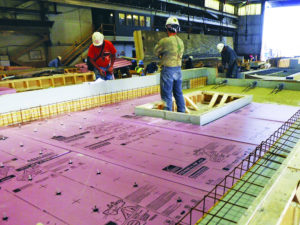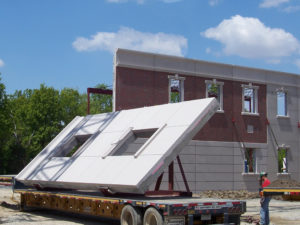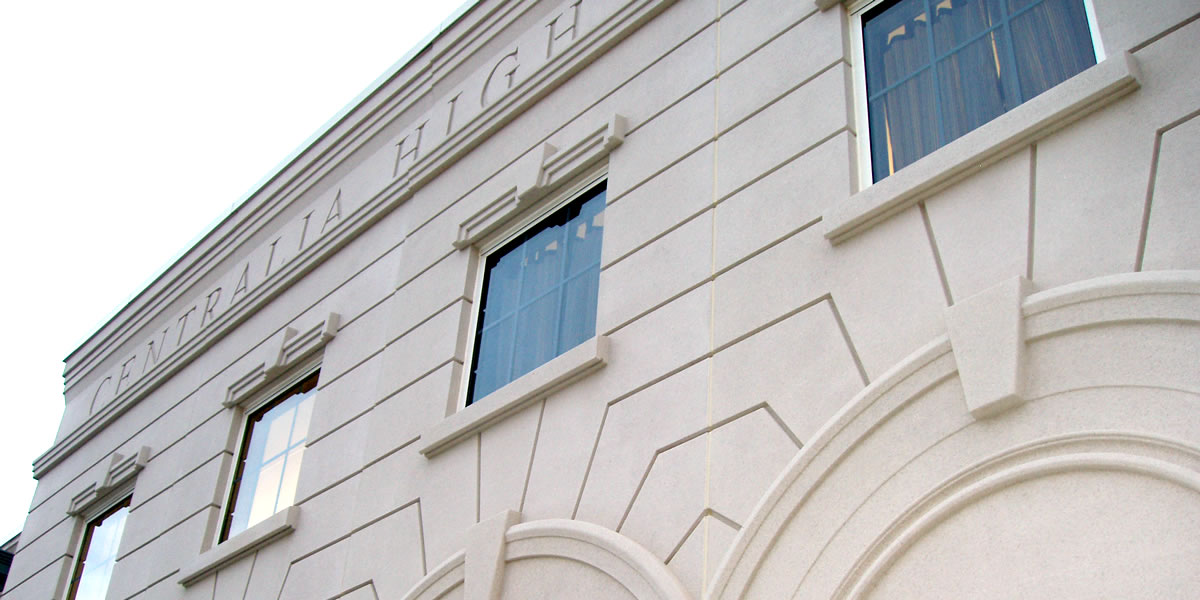Insulated precast concrete panels are cast into a specific shape at a location other than its in service position. The concrete is placed into a form, typically wood or steel, and cured before being stripped from the form, usually the following day.

These components are then transported to the construction site for erection into place. Precast concrete components are reinforced with either conventional reinforcing bars, strands with high tensile strength, or a combination of both. The strands are pretensioned in the form before the concrete is poured. Once the concrete has cured to a specific strength, the strands are cut (de-tensioned).
As the strands, having bonded to the concrete, attempt to regain their original untensioned length, they bond to the concrete and apply a compressive force. This “precompression” increases load-carrying capacity to the components and helps control cracking to specified limits allowed by building codes.

Prestressed concrete has been used in European buildings and structures since the early 1900s. The Baha’I Temple in Winnetka, Ill., which began construction in the 1910s, also used architectural concrete techniques to build its facade. But it wasn’t until the 1950s that prestressing and, later, precast concrete techniques became a significant influence in the American construction industry.
The first true U.S. project to incorporate prestressed concrete components was the Walnut Lane Memorial Bridge in Philadelphia, Pa., which was built in 1950 with prestressed concrete girders. The concept was the brainchild of Professor Gustave Magnel of Belgium. He initially developed the concept of prestressed concrete in the 1940s while at the University of Ghent. After he visited America in 1946 and published a book on the concepts, his ideas began to grow in popularity.
Thermomass systems have been used in precast wall panels since 1980, with the first uses being in agricultural and cold storage applications.

Additional Resources
Thermomass is a proud member of the Precast/Prestressed Concrete Institute and the Canadian Precast Prestressed Concrete Institute.